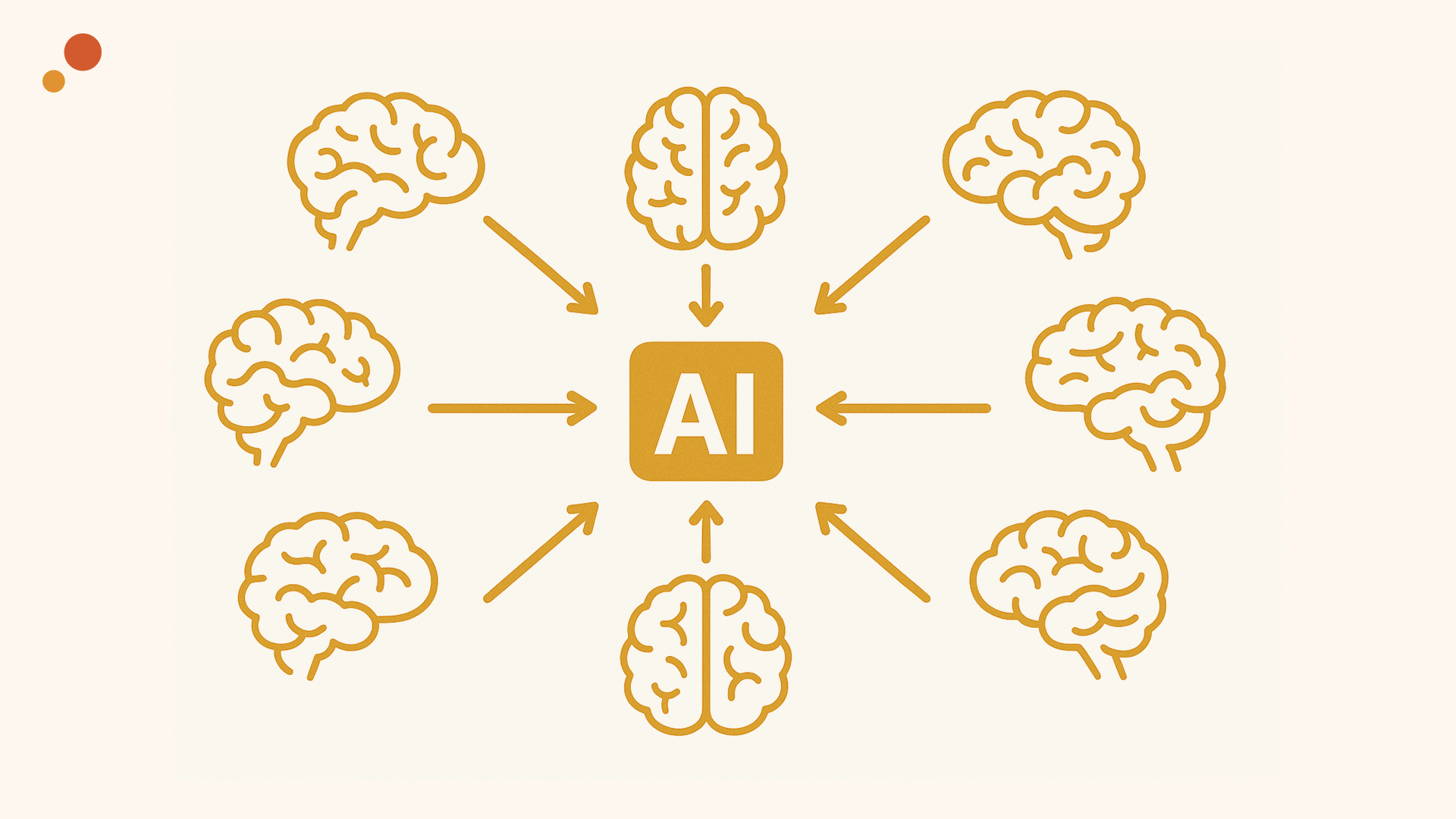The meeting room falls silent when Marcus announces he’s retiring next month. Thirty years with the company. He knows every client’s history, every supplier’s quirks, and has solved problems that don’t even have names yet.
Someone asks who’s going to take over his accounts. Marcus laughs, but it’s not funny. “Good luck,” he says. “Half of what I do isn’t written down anywhere.”
And just like that, three decades of institutional knowledge is walking toward the exit.
The Ghost in Your Company Machine
Every company runs on ghost knowledge. The unwritten rules, the relationship dynamics, the tribal wisdom that gets passed down through hallway conversations and coffee breaks.
It’s the account manager who knows exactly when to call each client for maximum impact. The engineer who understands which shortcuts are safe and which ones will blow up later. The operations lead who can predict supply chain issues weeks before they happen.
This knowledge doesn’t exist in your systems, your documentation, or your training programs. It lives entirely in people’s experience, intuition, and memory.
Until those people leave.
The Expertise Hoarding Problem
Here’s what nobody talks about: your best people are knowledge hoarders, and they don’t even realize it.
They’re not intentionally keeping secrets. They’ve just internalized so much experience that they can’t articulate what they know or how they know it. The pattern recognition happens automatically. The judgment calls feel instinctive. The relationship insights seem obvious.
Ask them to train their replacement, and they’ll focus on the tactical stuff. The processes, the tools, the checklists. But the real value is in the meta-knowledge: when to break the rules, how to read between the lines, why certain approaches work in specific situations.
That’s the knowledge that never gets transferred. It just… disappears.
The Multiplication Myth
Most companies handle knowledge transfer like a relay race. One person hands off to the next, hoping the baton doesn’t get dropped.
But this isn’t multiplication. It’s degradation. Each handoff loses fidelity. Each transition loses context. What started as rich, nuanced expertise becomes simplified procedures that miss the subtlety that made them effective.
You’re not preserving institutional knowledge. You’re creating institutional amnesia.
Where AI Sees What Humans Miss
Here’s what AI can do that traditional knowledge management can’t: it can observe patterns in decision-making that people can’t even see themselves.
While Marcus is managing his accounts, AI can analyze every interaction, every timing decision, every approach adjustment. It can identify what makes his communication style effective, what patterns predict client satisfaction, what signals indicate relationship risk.
AI doesn’t just capture what Marcus does. It captures how Marcus thinks.
When the engineering team solves complex problems, AI can map the thinking process, not just the solution. When operations prevents issues, AI can understand the early warning signals that drove those decisions.
The ghost knowledge becomes visible knowledge.
Learning from Patterns, Not People
Traditional mentoring is limited by human capacity. Marcus can only train one or two people directly. His knowledge transfer is bottlenecked by time, attention, and his ability to articulate unconscious competence.
AI doesn’t have those limitations. It can learn from Marcus’s pattern of decisions and make those patterns available to anyone who needs them. It can identify the successful approaches across multiple high performers and synthesize them into accessible insights.
Instead of hoping knowledge transfers through one-on-one relationships, you can systematically extract and redistribute the wisdom that drives exceptional performance.
Building the Company Brain
The opportunity isn’t just preventing knowledge loss. It’s creating knowledge multiplication.
Every problem your team solves becomes institutional learning. Every breakthrough becomes company-wide capability. Every expert’s intuition becomes accessible intelligence.
Your company stops being dependent on individual expertise and starts building collective intelligence. New hires don’t just replace departing employees; they inherit the accumulated wisdom of everyone who came before them.
Making Invisible Knowledge Visible
This requires platforms that can observe, analyze, and codify how work actually gets done. Not just the official processes, but the real decisions that drive results.
AI-powered systems can watch how your best performers navigate complex situations, identify the patterns that predict success, and make those patterns available to others facing similar challenges.
The knowledge that currently exists only in individual experience becomes part of your organizational capabilities.
From Hoarding to Sharing
When Marcus retires next month, thirty years of expertise doesn’t have to retire with him. The patterns in his decision-making, the insights from his client relationships, the problem-solving approaches that made him irreplaceable can become part of how your company operates.
Not as static documentation, but as dynamic intelligence that adapts and applies to new situations.
The ghost knowledge that haunts most companies becomes the competitive advantage that drives them forward.
Your institutional knowledge doesn’t have to walk out the door with your people. It can become the foundation that makes everyone who stays more capable than they could be alone.

